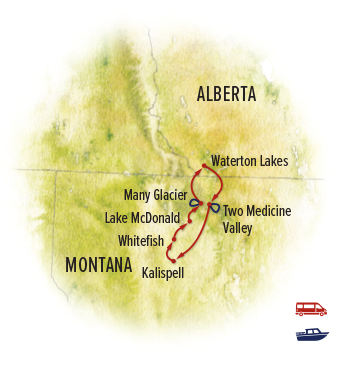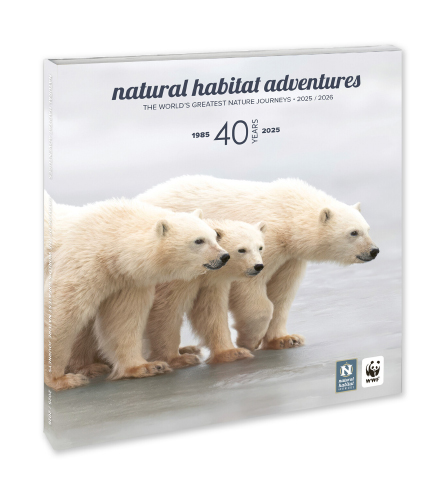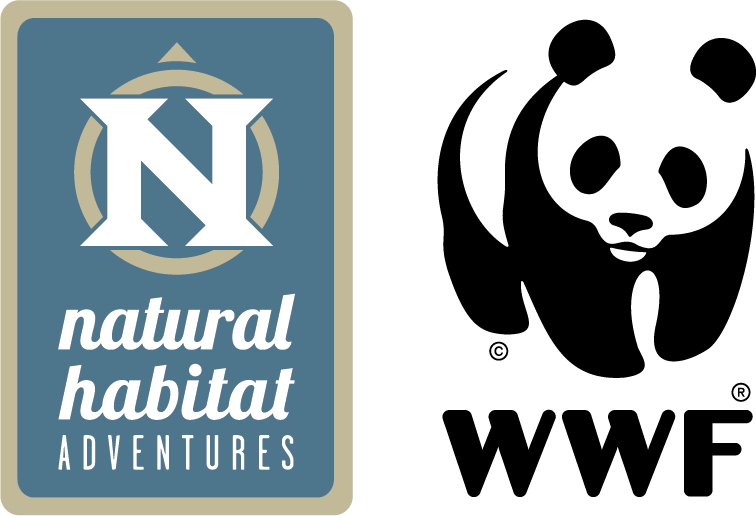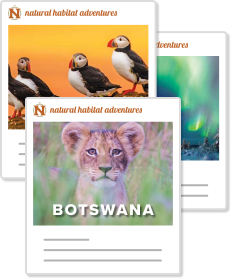Itinerary
Arrive in Kalispell and transfer to our stylish boutique hotel in nearby Whitefish, where our Glacier National Park & Waterton Lakes tour begins with a welcome dinner this evening.
Day 2: Flathead River Scenic Float / Historic Red Bus Tour / Lake McDonald
Drive east this morning toward Glacier National Park, the “Crown of the Continent” in the northern Montana Rockies and one of the most treasured natural landscapes in the United States. Famous for its ice-carved valleys and sheer peaks, Glacier contains some of the most pristine natural ecosystems left in the Lower 48. Water levels permitting, our introduction begins with a scenic float on the Middle Fork of the Flathead River, a stretch of water that birthed the National Wild and Scenic River System in the 1950s. Bordering Glacier National Park, the Flathead is one of the premier undammed rivers in Montana, coveted by anglers for its cutthroat trout, Dolly Varden, whitefish and kokanee salmon. Look for osprey and eagles as we pass through a steep, walled canyon along our way.
This afternoon, we board a classic open-top Red Bus for a private tour along the Going-to-the-Sun Road. One of America's most famous national park drives, this narrow byway, an engineering marvel completed in 1932, twists and climbs around Glacier's rocky spine all the way to the Continental Divide. Waterfall spray creates rainbows as streams pour off rock precipices, while serrated peaks poke the blue sky. Dropping back down the west flank of the pass, we overnight near Lake McDonald, with a chance to explore the lakeshore to admire the multicolored rocks in the transparent water.
Day 3: Trail of the Cedars / Going-to-the-Sun Road / Many Glacier
Our day begins with a morning foray into the forest on the west side of the park. This is the wetter side of the Continental Divide, where dense stands of fir and cedar cover the mountain slopes, and fern and mosses grow in their shadows. Scenic trails take us along the rushing whitewater of Avalanche Creek and the Trail of the Cedars, where we walk among old giants.
From this lush lower elevation, we ascend the Going-to-the-Sun Road once more, traversing the Divide in the heart of the park. As we continue down the east side, learn about the Lewis Overthrust fault and the region's tumultuous geological history. This afternoon we enter Many Glacier, one of the park's classic glacial valleys. Our destination for the next two nights is Many Glacier Hotel, built in 1915 as a grand Swiss-style chalet in the "American Alps," in the vision of the railway barons behind its construction. It sits on the edge of Swiftcurrent Lake overlooking a panorama of crenellated peaks.
Day 4: Many Glacier—Swiftcurrent Lake Cruise / Hike to Grinnell Lake
Scoured into a broad U-shape by rivers of ice that retreated some 10,000 years ago, Many Glacier features ragged crags, waterfalls that glissade from icy ledges, and alpine lakes set like gems in the rocky backdrop. We see why the Blackfeet gave the name "Backbone of the World" to the greater Glacier Park ecosystem. On a narrated boat tour across Swiftcurrent Lake, take in the panorama of Mount Grinnell, Angel Wing and surrounding peaks. Learn about the geology and ecology of our environs as we get within view of Grinnell Glacier, an experience future visitors may be less likely to have as climate change hastens the melting of the park's permanent ice features. Depending on the angle of the sun, the lake may appear opaque turquoise, the result of glacial silt suspended in the water as it flows down the mountain from Grinnell Glacier.
On a hike to Grinnell Lake, look for grazing elk in the meadows, and mountain goats and bighorn sheep perched on cliffs. These features bear the name of George Bird Grinnell, an early American conservationist, explorer and founder of the Audubon Society. He was so inspired by the scenery during his first trip to the area in 1885 that he spent the next two decades working to establish it as a national park. For those who are interested, additional hiking can be arranged today.
Day 5: Waterton Lakes National Park, Alberta—Hikes to Akimina Lake & Bertha Falls
This morning, we drive north across the Canadian border to spend two days exploring Waterton Lakes National Park. As Glacier's sister park, Waterton shares a border and an ecosystem, as well as joint UNESCO World Heritage Site status. In 1932, these two parks together became the first International Peace Park. Here where Alberta’s prairies meet the peaks of the Rockies, Waterton is a continuation of Glacier's stunning landscapes, and opportunities abound to discover this less-visited region.
With our Expedition Leader, explore a sampler of enticing trails that capitalize on the panoramic vistas at every turn, including a short hike to tranquil Akimina Lake. Look for wildlife as we follow the trail, lined with wildflowers in high summer, through the marshy forest—moose are often seen munching on vegetation at the bottom of the shallow lake. We'll also ascend through a mixed aspen forest on a hike to Bertha Falls, which is actually a series of waterfalls coursing down the mountainside. Along the way, stop to admire wildflowers and the spectacular view from Bertha Point overlooking Upper Waterton Lake and the peaks that flank it.
Day 6: Crandell Lake Hike / Upper Waterton Lake Boat Cruise
Greet the morning with a mellow hike to pretty Crandell Lake, which sits in a low forested saddle between Ruby Ridge and imposing Mount Crandell. Follow a trail through a birch forest to reach the peaceful lake, learning about fire ecology as we pass through a renewing forest area where we witness the regeneration of the plant ecosystem following a previous burn. Wildflowers abound in summer, and we may see the delicate Baker's mariposa lily, purple bee balm and flowering bear grass.
Later this afternoon, enjoy a cruise aboard the M/V International on Upper Waterton Lake, cruising south to Goat Haunt, Montana, at the lake’s end point just over the U.S. border. This historic vessel first began taking visitors to admire the views of waterfalls and sheer mountain cliffs in 1927. As we ply the sparkling blue waters, look for bears, moose, bighorn sheep, mountain goats and bald eagles. Once we return to our hotel, opt to wander around the small townsite where deer and bighorn sheep often graze upon the lawns.
Day 7: Waterton / Glacier National Park—Logan Pass / East Glacier
After a final morning in Waterton Lakes, return to the American side of this International Peace Park via the Blackfeet Reservation on the park’s eastern edge. Traveling westward, we climb above treeline once more to reach Logan Pass on the Continental Divide. From the pass, we ascend the Hidden Lake Overlook Trail, a high-alpine hike through lush meadows and tundra thick with white bear grass, glacier lilies and other seasonal wildflowers that may include yellow columbine and magenta fireweed. The stacked sedimentary layers of 8,765-foot Clements Mountain dominate the landscape early on, while we gain outstanding views of the Garden Wall and other peaks as we climb. From the overlook we are rewarded with a stunning 360° panorama, looking down on sapphire-blue Hidden Lake backdropped by the prominent profile of Bearhat Mountain. Look for abundant wildlife: the shaggy white mountain goat, which is Glacier National Park’s emblematic animal, is often seen in the area, as are bighorn sheep. Listen for the whistle of hoary marmots darting among the rocks, and keep an eye out, too, for black bears and grizzlies feeding among the bushes in avalanche chutes. More rarely, we may spot wolverines.
Descend to spend two nights in East Glacier, the eastern gateway to the park where the sacred lands of the Blackfeet Nation stretch from the rolling prairie to the towering peaks of the Continental Divide. For millennia, the Blackfeet people have revered this landscape, with its alpine summits, glacier-carved valleys, pristine turquoise lakes and ancient forests, as a place of deep spiritual significance. While early train travelers on the Great Northern Railway began arriving at East Glacier Station to marvel at these natural wonders in the early 1900s, the Blackfeet have long known and honored this land as "the Backbone of the World," a place of immense beauty, strength and cultural importance. In 1910, President William Taft established Glacier National Park, preserving 1 million acres as part of America's collective national heritage.
Day 8: Boat Cruise on Two Medicine Lake / Badger-Two Medicine Visit
Board the historic boat Sinopah for a morning cruise on Two Medicine Lake. The oldest boat in the park’s fleet, Sinopah was built in 1926 for the Glacier Park Hotel Company, the tourism subsidiary of the Great Northern Railway. After lunch, continue to the Blackfeet Indian Reservation where we have the privilege of exploring an exceptional tract of land—the Badger-Two Medicine region—with a local guide from the Blackfeet Nation. The name "Badger-Two Medicine" is a translation from Blackfeet terms for two crystalline streams that begin in snowfields and rivulets along 30 miles of the Continental Divide: Badger Creek— Miisinskiisah'taa —was the traditional name for that river, and Two Medicine— Naatookyookaasin —references an encampment of two medicine lodges pitched along that river.
Badger-Two Medicine is an almost entirely roadless expanse of mountains, high ridge tops, forested river valleys and wetlands along Montana’s Rocky Mountain Front. It is located at the intersection of the Blackfeet Reservation, Glacier National Park and the Bob Marshall Wilderness Complex, and is part of the headwaters of the Missouri River. After two decades of effort, Badger-Two Medicine is on the cusp of permanent protection by Congress as a Cultural Heritage Area. We discover a portion of it on a guided hike today with a tribal member, learning about the Blackfeet Nation’s ancient connection to this land and its creatures. Wildlife abounds in the region, including grizzly and black bear, gray wolf, lynx, wolverine, deer, elk, moose, mountain goat and bighorn sheep. We’ll also have a cultural presentation by members of the tribe. Afterward, return to East Glacier where we gather for a farewell dinner.
Day 9: Kalispell / Depart
This morning our Glacier National Park trip concludes as we get an early start for the drive back to Kalispell, where we meet departing flights this afternoon. Following Highway 2, our scenic route skirts the south side of the park, passing through Essex, a historic stop on the Great Northern Railway line between West and East Glacier where trains took on additional coal and water. Our journey concludes at Glacier Park International Airport in Kalispell.

























